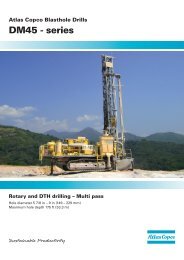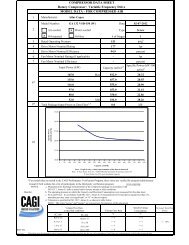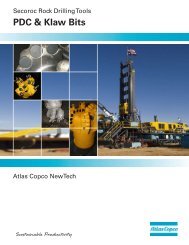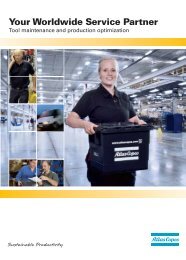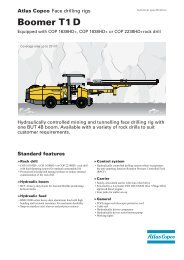Download - Atlas Copco UK
Download - Atlas Copco UK
Download - Atlas Copco UK
You also want an ePaper? Increase the reach of your titles
YUMPU automatically turns print PDFs into web optimized ePapers that Google loves.
The right desiccant dryer<br />
for your application<br />
A dry compressed air system is essential to maintain the reliability of production processes and the quality of end products.<br />
Untreated air can cause corrosion in pipe work, premature failure of pneumatic equipment, and product spoilage.<br />
<strong>Atlas</strong> <strong>Copco</strong>'s desiccant dryers protect your systems and processes by producing superior dry compressed air in a reliable<br />
and energy-efficient way.<br />
Working principle<br />
Desiccant dryers or twin tower dryers consist of two towers filled with desiccant such as activated alumina or silica<br />
gel. While one tower is drying compressed air, the other is being regenerated. Desiccant dryers can achieve dewpoints<br />
of down to -40°C/-40°F and -70°C/-100°F. Four types of desiccant dryer are widely used throughout industry:<br />
heatless, heated purge, heated blower purge and heat of compression.<br />
Heatless dryers use a small portion of the dried compressed air for regeneration.<br />
Heated purge dryers use a small and heated portion of the dried compressed air<br />
for regeneration.<br />
Heated blower purge dryers use heated ambient air for regeneration.<br />
Heat of compression desiccant dryers use the heat of compression to dry<br />
compressed air.




